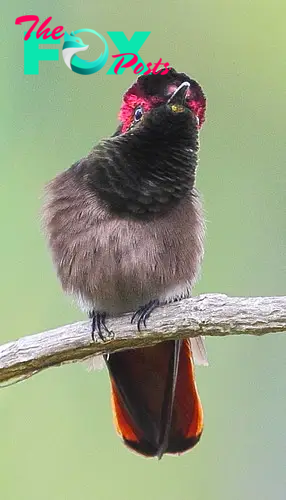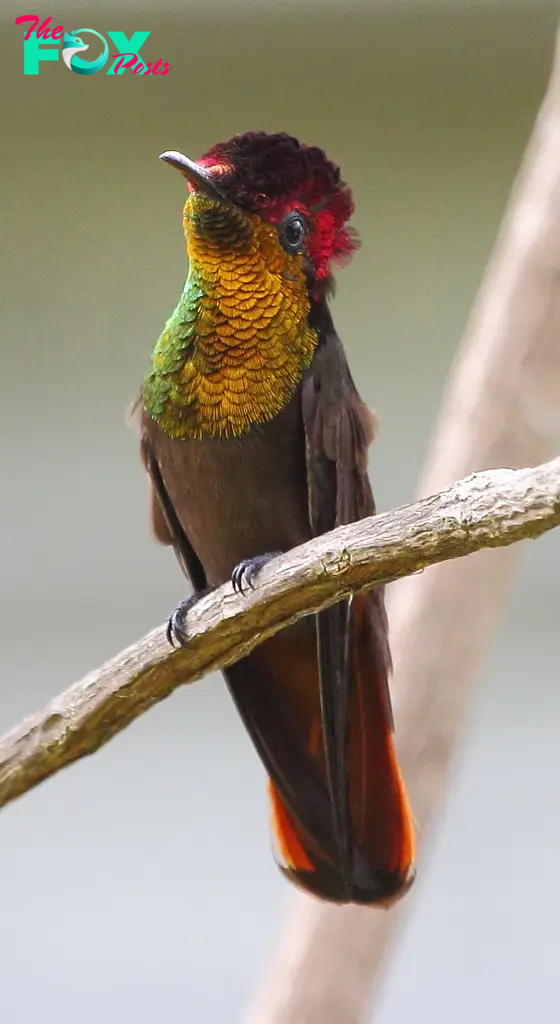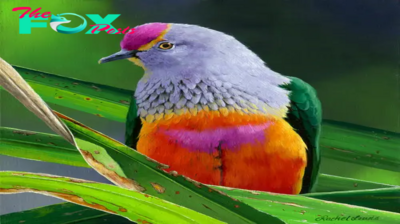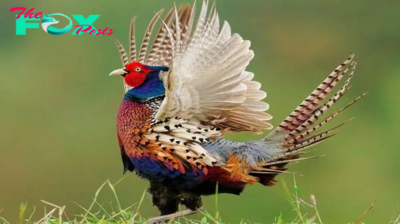Pet
QL An unmistakable presence, this petite bird dons a multifaceted ruby-red crown and a dazzling golden throat!
Unmistakable wearing his ruby-red crown and glittering golden throat, the male is a bird not to be missed!
Meet the Ruby-topaz Hummingbird
by Feroze Omardeen is licensed under CC BY 2.0.

The ruby-topaz hummingbird (Chrysolampis mosquitus), commonly referred to simply as the ruby topaz, is a hummingbird that wears various colors according to the lighting he happens to be in. Under the shade of trees, the male can look more of a dull brown color, but under the sun that all changes when he becomes a glittering jewel. His throat and chest are iridescent golden yellow or emerald green. While his head Sports a ruby-red forehead, crown and nape can sometimes appear orange. His body is brown, his wings gray, and his tail bright chestnut tipped in black. The short bill is black, as are the legs and feet, while the eyes are brown.

“Ruby-topaz hummingbird (Chrysolampis mosquitus) female” by Charles J. Sharp is licensed under CC BY-SA 4.0.
Female birds have upperparts that are copper-green, while the tail is olive-green central rectrices surrounded by chestnut ones. Underparts are pale gray. In Trinidad and Tobago, birds have a greenish-golden stripe from chin to breast.
Immature birds tend to resemble adult females.
” by Feroze Omardeen is licensed under CC BY 2.0.

These birds are found in Aruba, Bolivia, Bonaire, Brazil, Colombia, Curaçao, French Guiana, Guyana, Panama, Suriname, Trinidad and Tobago, and Venezuela.
“Ruby-topaz Hummingbird” by Mike’s Birds is licensed under CC BY-SA 2.0.

Ruby-topaz hummingbirds can often be found in open country, cultivated areas, clearings, and gardens, foraging down from treetops.
“ruby-topaz wm m2014a” by Feroze Omardeen is licensed under CC BY 2.0.

These birds feed on nectar from flowers, shrubs, cacti, trees, and cultivated plants. However, they will also dine on insects taken on the wing, and by foraging in foliage for arthropods.
“ruby topaz, ruby-topaz hummingbird” by desertnaturalist is licensed under CC BY 4.0.

The breeding season for Ruby-topaz hummingbirds runs from December through to June in Trinidad and Tobago, and from September through to January in Venezuela and Guyanas. During this time a nest built from plant fibers and spider webs is placed in the fork of a small branch on a tree. Within the female lays two eggs and incubates them for 15-16 days.
“Ruby-topaz Westmoorings Trinidad West Indies may2014” by Feroze Omardeen is licensed under CC BY 2.0.

This bird is regarded as of Least Concern on the IUCN Red List.
“File:Ruby-topaz hummingbird (Chrysolampis mosquitus) male in flight.jpg” by Charles J Sharp is licensed under CC BY-SA 4.0.

-

 Pet18m ago
Pet18m agoSOT.”(VIDEO) Meet the ‘Giant’ Cat: Introducing the Feline Almost as Long as a 4-Year-Old”.SOT
-

 Pet18m ago
Pet18m agoSOT.””Gandalf’s Epic Adventures: The Fearless Feline Globe-Trotter”.SOT
-

 Pet23m ago
Pet23m agoHomeless Dog Discovered with Mouth Wired Shut Overcomes Trauma and Is Now All Smiles in His New Home
-

 Pet4h ago
Pet4h agoLamz.Heartbroken Goodbye: Mother Dog Bids Farewell to Her Adopted Puppy
-

 Pet6h ago
Pet6h agoson.The emotional farewell when two dogs said goodbye to their sick mother touched everyone.
-

 Pet6h ago
Pet6h agoquoc. “Every Dawn, Loyal Nicky Travels 3km to Bring Sustenance to an Elderly Soul, Crafting an Unforgettable Tale of Compassion”
-

 Pet10h ago
Pet10h agoWishing this wonderful fellow lots of love and happiness on his special day. Happy 19th Birthday, Henry! 🎉🎂🥳 May your day be filled with joy and cherished moments!-zedd
-

 Pet12h ago
Pet12h agotph.Tearful Reunion: Long-Lost Dog Reunites with Owner, Bringing Tears of Joy to the Girl’s Face.tph



























